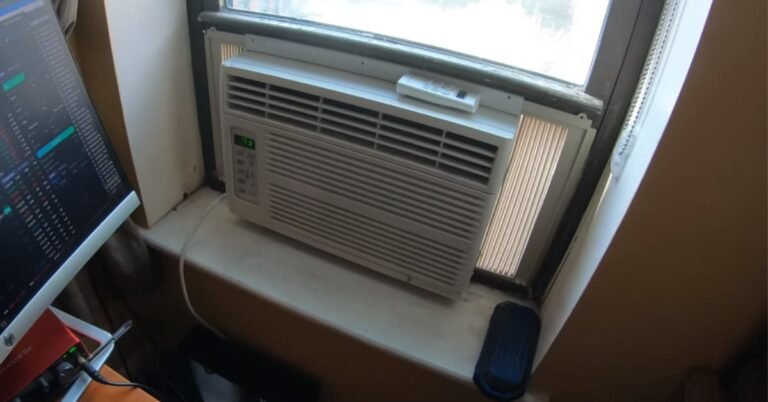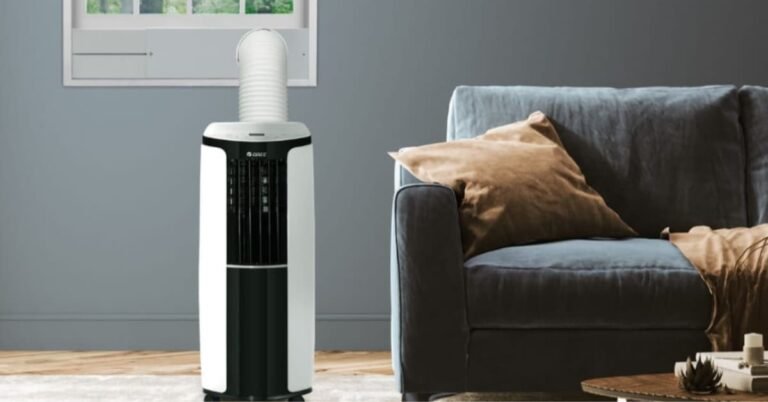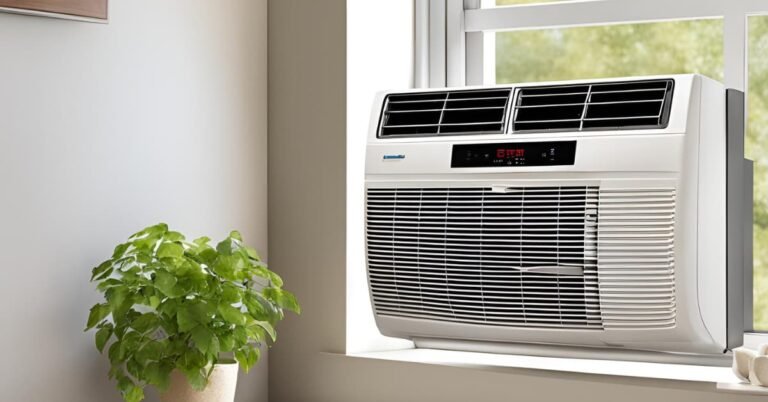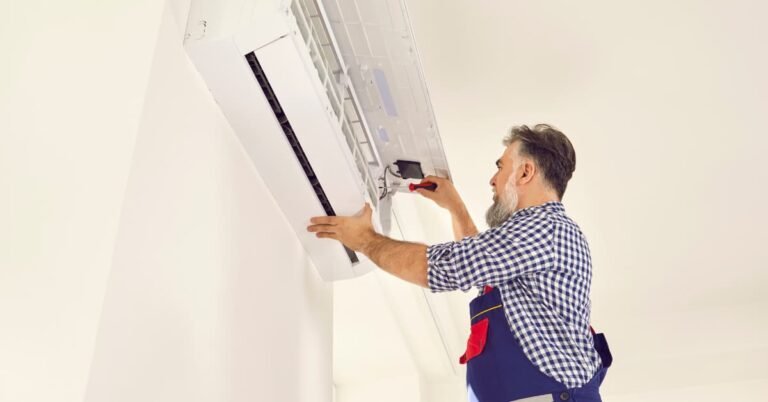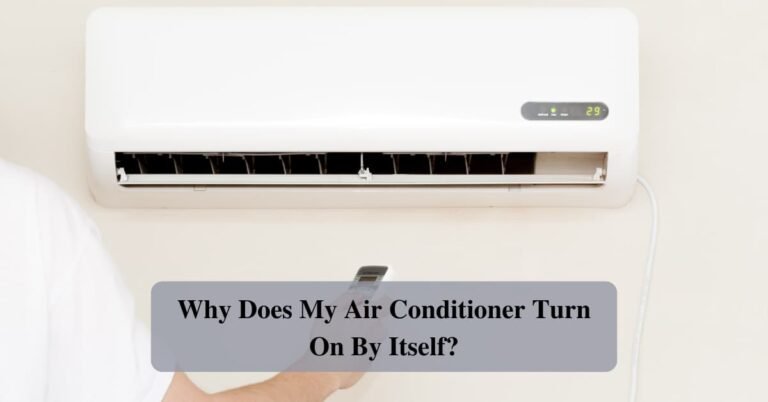GE Air Conditioner Heat Mode Not Working- 8 Solution
Discovering that your GE air conditioner’s heat mode is malfunctioning can be frustrating and inconvenient. Troubleshooting the issue promptly is essential for restoring warmth and comfort to your space.
By identifying the root cause of the problem and implementing the necessary fixes, you can ensure that your air conditioner operates efficiently and effectively.
GE Air Conditioner Heat Mode Not Working
From external unit blockages to malfunctioning components or incorrect installation, it’s important to explore possible solutions to resolve the heat mode failure.
Taking proactive steps can help you enjoy the benefits of a functioning heat mode in your GE air conditioner.

Thermostat Settings
When your GE air conditioner’s heat mode stops working, one of the potential causes could be incorrect thermostat settings. The thermostat controls the temperature and mode of operation in the air conditioner.
If the settings are misconfigured, it can prevent the heat mode from functioning properly.
How to Fix?
1. Check the thermostat display: Ensure that the displayed temperature matches the desired heating temperature.
2. Set the thermostat mode: Switch the mode to “Heat” or “Heat/Cool” depending on your model.
3. Adjust temperature settings: Increase the set temperature to trigger the heat mode.
4. Verify fan setting: Ensure the fan is set to “Auto” or “On” for the heat to circulate properly.
5. Check programming: If your thermostat has programming capabilities, review and adjust the schedule if necessary.
6. Reset the thermostat: Turn off the air conditioner and remove the batteries or reset it according to the manufacturer’s instructions.
7. Test the heat function: Turn on the air conditioner and set it to heat mode. Check if warm air is being produced.
Power Supply
A faulty power supply can also lead to a GE air conditioner heat mode malfunction.
Issues with the power source can prevent the unit from receiving adequate electricity, causing the heat mode to cease functioning.
How to Fix?
1. Check power source: Ensure that the air conditioner is properly connected to a functioning power outlet.
2. Reset the circuit breaker/fuse: Locate the circuit breaker or fuse box and reset any tripped breakers or replace blown fuses.
3. Test the outlet: Plug in another device to the same outlet to verify if it is receiving power. If not, consult an electrician.
4. Inspect the power cord: Check for any visible damage or loose connections. Replace or repair as needed.
5. Use a voltage tester: If you suspect an issue with the power supply, use a voltage tester to determine if the outlet is providing the correct voltage.
6. Contact a professional: If you have followed the steps above and the power supply issue persists, it may require professional assistance.
Filter Blockage
Blocked or dirty filters can impede the airflow in your GE air conditioner, affecting its heat mode operation. Accumulated dust and debris hinder the unit’s performance, leading to inadequate heating.
How to Fix?
1. Locate the air filters: Depending on the model, the filters may be located behind a front panel or in a removable grille.
2. Turn off the air conditioner: Before proceeding, ensure the unit is switched off and unplugged for safety.
3. Remove the filters: Take out the filters from their housing carefully.
4. Inspect the filters: Check for dirt, dust, or debris buildup. If the filters are washable, follow the manufacturer’s instructions to clean them. Otherwise, replace it with new filters.
5. Clean the filters: If reusable, rinse washable filters under warm water until clean. Allow them to dry completely before reinstalling.
6. Reinstall the filters: Put the filters back in their original position, ensuring they are securely in place.
7. Test the heat mode: After reassembly, switch the air conditioner to heat mode. Verify if the airflow has improved.
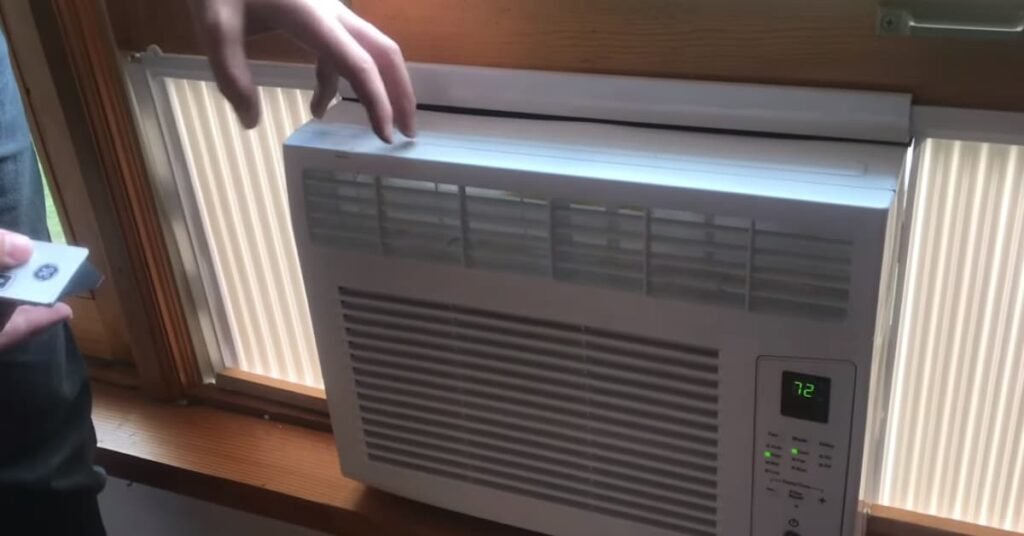
Refrigerant Issues
Refrigerant plays a crucial role in the heat exchange process of your GE air conditioner.
Insufficient refrigerant levels or leaks can hamper the unit’s ability to generate heat efficiently.
How to Fix?
1. Turn off the air conditioner: Before handling refrigerant-related issues, ensure the unit is powered off for safety.
2. Inspect for leaks: Check for visible signs of refrigerant leaks such as oil stains or frost buildup on the refrigerant lines or coils.
3. Contact a professional technician: Refrigerant handling requires expertise and special equipment. It is advisable to consult a trained HVAC technician to check for leaks, repair if necessary, and recharge the refrigerant.
4. Check for leaks in the ductwork: Leaky ducts can also cause reduced heating efficiency. Consider having a professional inspect and seal any leaky ducts.
5. Regular maintenance: To prevent future refrigerant issues, schedule regular maintenance with a qualified technician. They can verify refrigerant levels and address any potential leaks proactively.
External Unit Blockage
The external unit of your GE air conditioner plays a crucial role in the heat exchange process.
If the unit is blocked or obstructed, it can impede the heat mode’s functionality and reduce heating efficiency.
How to Fix?
1. Turn off the air conditioner: Before inspecting the external unit, switch off the power for safety.
2. Clear debris and vegetation: Remove any leaves, twigs, or debris that have accumulated around and inside the unit.
3. Check for blockages: Examine the fins, coils, and fan blades for any dirt, dust, or blockages. Use a soft brush or vacuum cleaner to clean the surfaces gently.
4. Maintain clearance space: Ensure there is at least two feet of clearance around the external unit to allow for proper airflow.
5. Restore proper airflow: Use a garden hose with a gentle stream of water to rinse the coils from top to bottom, removing any stubborn dirt or debris.
6. Reassemble and restart: After cleaning, restore any removed parts or covers securely. Switch on the air conditioner and set it to heat mode to check if it operates effectively.
Malfunctioning Components
Malfunctioning components within your GE air conditioner can result in heat mode failure.
Components like the fan motor, compressor, or control board may experience issues, leading to an inability to generate sufficient heat.
How to Fix?
1. Safety first: Prior to inspecting or repairing the internal components, ensure the air conditioner is powered off and unplugged.
2. Identify malfunctioning component: If you suspect a specific component, refer to your air conditioner’s manual to locate it within the unit.
3. Test the component: Use a multimeter or consult a professional technician to test the faulty component for proper functioning.
4. Replace or repair: Depending on the severity of the malfunction, you can replace the component yourself if you have the necessary knowledge and skill. Otherwise, contact an HVAC technician who can diagnose and repair the issue professionally.
5. Follow manufacturer instructions: If replacing the component, carefully follow the manufacturer’s guidelines for installation and wiring.
6. Reassemble and test: After replacing or repairing the malfunctioning component, reassemble the unit and test the heat mode to ensure it is now functioning correctly.
Incorrect Installation
Improper installation of your GE air conditioner can lead to various operational problems, including malfunctioning heat mode.
Incorrect electrical connections, misaligned components, or inadequate insulation can all contribute to heating issues.
How to Fix?
1. Consult the installation manual: Locate the installation manual that came with your air conditioner to ensure you understand the correct installation procedure.
2. Check electrical connections: Inspect the electrical connections and ensure they are properly secured. Verify that the wiring matches the manufacturer’s specifications.
3. Examine component alignment: Check if internal components such as the fan, coils, or other parts are aligned correctly and securely fastened.
4. Evaluate insulation: Assess the insulation around the refrigerant lines to ensure it is intact and properly covering the lines.
5. Rectify installation errors: If any errors are identified, consider contacting a professional technician to correct the issues.
6. Follow professional advice: If you are unsure about the correct installation process, it’s recommended to seek professional assistance to reinstall the unit properly.
System Compatibility
System compatibility issues can affect the heat mode functionality of your GE air conditioner.
Incompatibility between the thermostat and the air conditioner’s control board can lead to communication and operational problems.
How to Fix?
1. Verify system compatibility: Check the air conditioner’s manual and specifications to ensure compatibility with your thermostat model.
2. Check wiring compatibility: Inspect the wiring connections between the thermostat and the air conditioner’s control board to ensure they are properly connected and aligned.
3. Replace incompatible parts: If you find that your thermostat and air conditioner are not compatible, consider purchasing a compatible thermostat that is recommended by the air conditioner manufacturer.
4. Follow installation guidelines: When installing the new thermostat, carefully follow the manufacturer’s installation instructions to ensure proper wiring and compatibility.
5. Test the heat mode: After installing the compatible thermostat, switch the air conditioner to heat mode. Verify if the heat mode is now functioning correctly.
Do I need to replace my GE air conditioner if the heat mode fails?
When the heat mode of your GE air conditioner fails, you might wonder if a replacement is necessary. However, the need for a replacement depends on various factors and the severity of the issue.
It’s important to identify the specific cause of the heat mode failure. Issues like external unit blockages, malfunctioning components, installation errors, or system compatibility can often be resolved without replacing the entire air conditioner.
If the problem is due to blockages, a thorough cleaning and maintenance of the external unit may be sufficient. Likewise, if a specific component is found to be malfunctioning, repairing or replacing that component can restore the heat mode’s functionality.
However, there might be cases where the underlying issue is complex or if multiple components are faulty. In such situations, it might be more cost-effective to replace the air conditioner. Additionally, if the unit is already old or experiencing other major performance problems, replacing it entirely could be a more practical option.
To make an informed decision, consider consulting a qualified HVAC technician who can accurately diagnose the issue and provide guidance on whether a replacement is necessary. They will take into account factors such as the cost of repairs, the age of the unit, and its overall condition.
Conclusion
Experiencing issues with the heat mode of your GE air conditioner can be frustrating and inconvenient. However, by employing proper troubleshooting techniques, you may be able to resolve simpler problems on your own.
For more complex issues or if you lack the necessary technical expertise, it is advisable to seek professional assistance to ensure safe and effective repairs.
Remember to prioritize safety by following proper precautions and turning off the power supply before attempting any repairs.

